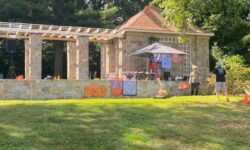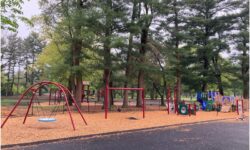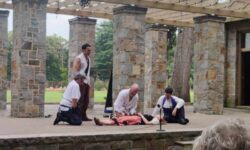By Amelia Tarallo
Hometown Weekly Staff
The Trustees of Reservations has been very popular during the last few months. Each of the organization's properties, most notably the ones that have remained open for the pandemic's duration, provides an outdoor refuge away from constant COVID news cycles and worries about illness - not to mention the perfect opportunity to social distance while exploring. Bird Park in Walpole most certainly qualifies as one of these popular spots.
Perhaps what makes it somewhat ironic is the fact that the park was built on the back of America's last major pandemic, the Spanish Flu pandemic of 1918 to 1920.
In early August of 1918, just as the Spanish Flu was beginning to hit Boston, Francis William Bird succumbed to an illness while hospitalized at the age of 37. Weeks later, Boston's earliest cases of the Spanish Flu were discovered when two Navy sailors went to their sickbay suffering from flu symptoms. Though there are discrepancies about whether Bird truly did die of the Spanish Flu, witness accounts note that his family stated he perished as a result of pneumonia. It is believed that pneumonia was one of the leading reasons people succumbed to the disease during the pandemic, making it easy to see the connection between Bird’s death and the deadly virus.
Francis William Bird’s father, Charles Sumner Bird, was a successful industrialist who often tried to improve the life of the working class in the area. In the early to mid 1920s, the population of Walpole was rapidly increasing. Both William and Charles Bird, along with the help of John Nolen, a landscape architect, drew up housing plans for a development known as Neponset Garden Village. These houses were meant to be better designed, more picturesque, and still maintain the low-cost housing many industrialists created for their employees. These plans were abandoned shortly after for unknown reasons. Instead, Bird and Nolen joined forces to create Francis William Bird Park, the perfect tribute to his son. The wide-open area with plenty of space for recreational activities provided the perfect setting for Walpole residents to enjoy a relaxing day.
The park we have today is pretty similar to the one finished in 1925, with a few key differences. "The swimming pool, which now serves as a pond, was designed to represent a New England seashore. It had shallow 'tidepool' areas, sand, and even seashells. Where the meadows and wooded areas provided the spiritual uplift of nature, the pool was an example of the more formal recreational opportunities built into the park, because both Nolen and Bird recognized the social benefit of organized physical activities," writes Archives and Research Center Manager Alison Bassett of the Trustees. Even with absence of the swimming pool, the park has continued to be used exactly how Bird and Nolen pictured. “Although the swimming pool is no longer functioning, the outdoor theater, courts, and large Vista Field remain for more organized activities, and other areas of the park continue to provide a place of respite and relaxation in nature. And though the uses of the park have changed over time, it continues to play an absolutely vital role in the health and happiness of the local residents, which was what John Nolen and Charles Sumner Bird wanted,” notes Bassett.
This summer, residents of New England are expected to maintain social distancing measures to reduce the chances of a second wave of coronavirus. With this in mind, it’s almost certain that people will seek entertainment at outdoor venues like Bird Park. Bird and Nolen knew they were giving Walpole the gift of the outdoors with Bird Park, but probably never imagined how it would aid the town during yet another pandemic.






















